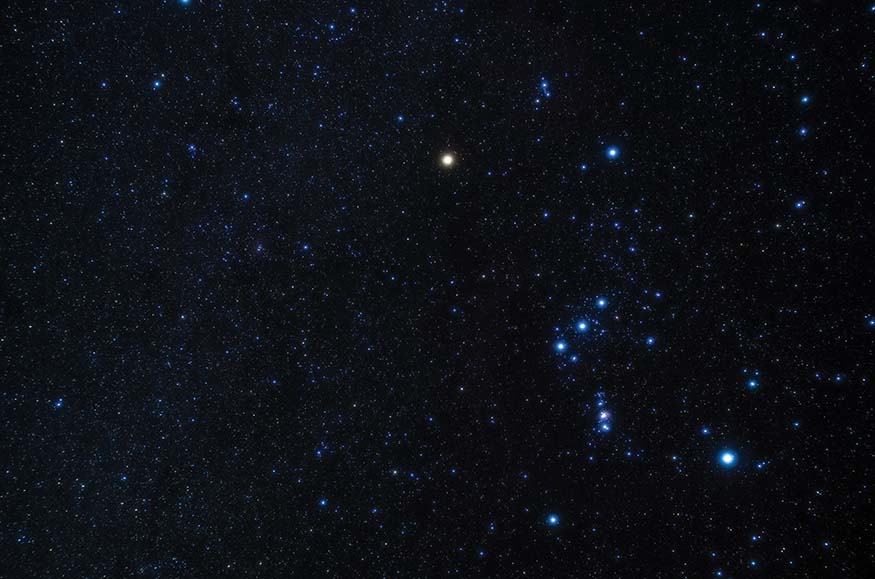
BEAUTY: 
BRAGGING RIGHTS: You saw a red giant
HOW EASY IS IT TO SEE? Just look up
best time to see it: Winter (in Orion)
TYPE: Star
DISCOVERED: Known since antiquity
Betelgeuse is big—really big. But space is bigger—unimaginably bigger. Betelgeuse is a supergiant star, almost a thousand times bigger (in diameter) than our own tiny sun. It is one of the largest stars we know about and the tenth-brightest star in our sky (eleventh if you count the sun).
If Betelgeuse were at the distance of Pluto, it would appear 24 times larger than the full moon. It would be an amazing sight—if any humans survived its massive energy output.
But space is big. Really big. Betelgeuse is almost 650 light-years away—about 40 million times farther away from us than the sun. At that distance, Betelgeuse looks tiny. To get any idea of just how big space is, imagine if you could see a bee from a mile away. Betelgeuse appears 30 times smaller than that.
And yet, in the 1920s, scientists were able to magnify Betelgeuse enough to measure its diameter. It is one of the few stars large enough that we can directly measure its size. Space is big, but human ingenuity is up to the challenge.
On the shoulder of Orion. Betelgeuse is easily seen in winter. It is the bright reddish star forming Orion’s left shoulder (as seen from us).
Red and blue. Stars are normally too faint to trigger our color receptors. But Betelgeuse is bright enough to appear noticeably colorful. Compare red Betelgeuse to blue-white Rigel—the star on the bottom right of Orion.
Variable star. Like other red supergiants, Betelgeuse is slightly variable: it expands and contracts as the forces of gravity and nuclear fusion fight for dominance. Sometimes Betelgeuse can be as faint as magnitude 1.3—fainter than Rigel. Other times it can be as bright as Vega.
Supernova? In 100,000 years or so, Betelgeuse will run out of nuclear fuel and gravity will win once and for all. The outer layers of the star will fall down to the solid core, accelerating all the way. When they hit, the resulting explosion will be a supernova. For months Betelgeuse could be as bright as the moon.
ORION REGION IN WINTER; 30-DEGREE FIELD OF VIEW